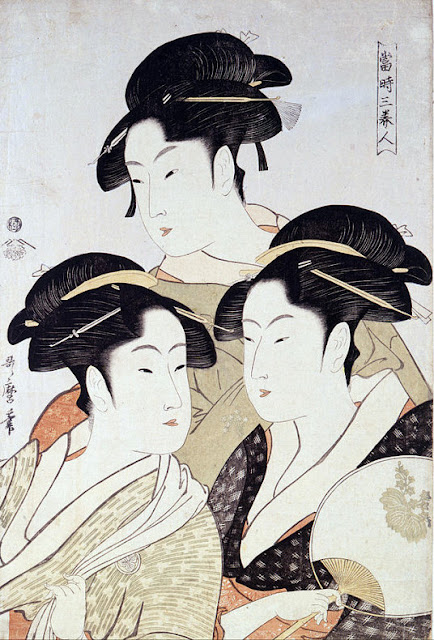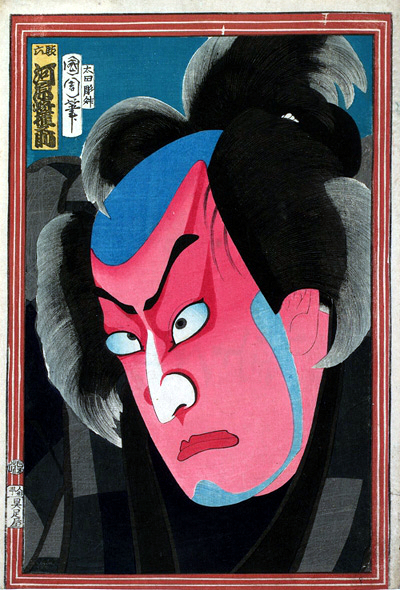 |
| Keisei: Benzaiten Seated on a White Dragon - 1832-1833 |
Aoigaoka Keisei was active during the 1820s and 1830s. He was Hokkei's student, possibly also Hokusai's, and his prints, mainly surimono and book illustrations, are of a very high technical standard.
This print is named "Benzaiten sitting on a White Dragon". It is also called "The Goddess Benzaiten Appears to Hôjô Tokimasa at Enoshima". But that title is misleading, unless one sees the whole vertical diptych, of which this is the top print. The bottom print is missing here.
Benzaiten is a Japanese Buddhist goddess of everything that flows: water, words, music, time, and knowledge - and she is one of the Seven Gods of Good Fortune. She is also considered a Shinto kami and a protector deity of Japan, and she is associated with dragons. Her origin can be traced back to the Hindu goddess Saraswati.
The musical instrument she holds is a biwa, a traditional Japanese lute.





